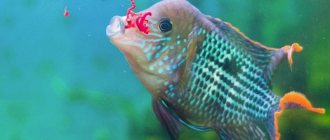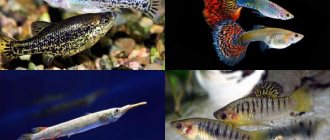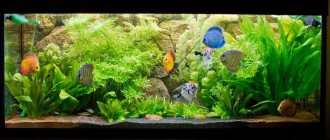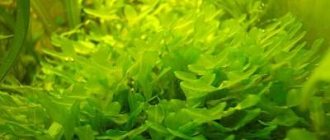If you love intellectual relaxation, then you probably do crossword puzzles or scanword puzzles in your spare time. Of course, this is a very exciting activity that allows you to expand your horizons and demonstrate your erudition.
Just how often have you encountered a situation where you need to guess, for example, a 6-letter word that you have no idea about? Most likely, you will remember more than one such case when, due to such an unfortunate misunderstanding, another scanword puzzle remained incompletely solved. But now you have a unique assistant - the Crossopen.ru !
Answers to scanwords on VKontakte, Odnoklassniki and many others
What is our service?
It will replace you with many dictionaries, encyclopedias and well-read relatives with whom you previously consulted if you were unable to find the right word on your own. With Crossopen.ru you can easily solve a crossword puzzle of any difficulty level using an intuitive search form.
The main advantage of our service is a huge database of words and questions for which you can find the appropriate answer. A user-friendly interface will provide you with a quick search for words of 3, 4, 5 or more letters . It is important to note that at the same time you can clarify your request by indicating the subject, as well as the letters you already know - the so-called word search by mask .
Let's look at the interface using a clear example: you need to find out the poet's last name, which has 6 letters, and the third is “sh”. You set up a search for 6-letter words, click on the corresponding empty cell and insert the letter you know, after which you specify the keyword - “poet”. As a result, you get various options, one of which is sure to be correct. This way you can find any answers to crossword puzzles , because it’s very simple!
You can solve any crossword puzzle!
Our service is absolutely free, and you can freely use it to search for answers to any crossword or scanword puzzle, both from the newspaper and on the Internet. For example, our database contains almost all the answers to Odnoklassniki and VKontakte crossword puzzles, which will allow you to solve them quickly and with pleasure.
Plus, you can create these kinds of brain teasers yourself! To do this, just list the words in alphabetical order and choose the options that suit you with descriptions so that the resulting crossword puzzle is interesting and educational.
So if you like to solve crosswords, the Crossopen.ru will become a convenient and reliable assistant for you. Spend your free time doing your favorite activity with pleasure!
Popular types
The most popular varieties of such unusual aquarium fish include the following.
Aravana
An ancient aquarium predator, dating back about 25 million years. It lives in South American reservoirs and has a massive, elongated and laterally flattened body. Length - up to 1 meter, weight - up to 5 kg, covered with large scales of silver-beige or silver-pink tint. It can jump high out of the water column after prey and is very aggressive. It feeds on mollusks, small fish, frogs, arthropods, insects and even small birds and reptiles.
Aravana is an ancient aquarium predator, dating back about 25 million years.
Astronotus
Astronotus auratus is an oval-shaped cichlid native to Venezuela, which is very popular due to its variety of colors: multi-colored spots or scales on a dark background, creating intricate patterns. The phenotype reaches 35 cm and is known for its aggressiveness. For two astronotuses you will need a housing with a capacity of 350-400 liters. It feeds on animal food, but will not refuse fruit.
The phenotype reaches 35 cm and is known for its aggressiveness
Astronotuses get used to their owner, recognize him and greet him, swimming up to the wall of the dwelling. They love to dig up soil.
Auratus
The cichlid fish, which has the second name Melanochromis golden, comes from Africa (Lake Malawi). Bright yellow on the belly with alternating white and black stripes on the back. Despite its tiny size (no more than 10 cm), it has an aggressive character, attacking neighbors.
Auratus has an aggressive character
Bryzgun
A perch-like representative of a silver color with vertical stripes. Prefers marshy areas of Asia and Australia. A distinctive feature of the splasher, which determined its name, is its method of hunting: the animal releases a stream of water 1.5 meters in order to disorient or knock the victim from its home. Eats shellfish, insects and other prey.
Perch-like representative of silver color with vertical stripes
Pseudotropheus
These are small (up to 15 cm) African predators of bright color: blue-black vertical stripes are located on a yellow or blue background of the body. Along with meat foods, they also prefer plant foods.
Females are especially aggressive, capable of attacking even large cohabitants. A harem of 1 male and at least 3 females would be optimal.
Along with meat foods, they also prefer plant foods.
Tropheus
Endemic to Lake Tanganyika from the cichlid family. Small fish (up to 15 cm), changing their color depending on age. Young specimens are dark, with blue spots, adults are black with a yellow stripe and a blue-blue head. They eat both algae and small animals.
Tropheuses change color depending on age
Compatibility
A species aquarium is the best option for keeping carnivores. However, there are often clashes within the species, for example, over territory or during spawning. Crookshanks also attack each other out of hunger.
Under no circumstances should you add small fish, otherwise they will simply become live food for “meat eaters.” Large herbivores can be added to some varieties so that they do not become prey for hunters.
Some species prefer solitary living, while others are kept only in groups.
Maintenance and care
Labeo cannot be called easy to care for and maintain: the fish is more suitable for experienced aquarists than for beginners .
Water requirements
The fish requires a spacious aquarium with a volume of at least 60 liters . Many aquarists even believe that to comfortably keep one individual, you will need a reservoir with a capacity of at least 80 liters.
The optimal water temperature is 23…27 °C with a hardness of 6–18 gH and acidity of 6.5–7.5 pH .
In their natural environment, labeos live in bodies of water with strong currents; similar conditions need to be recreated in the aquarium.
In addition, Labeo requires fresh water , which is provided by weekly water changes of up to 20% of the aquarium volume.
Lighting
Avoid exposure to direct sunlight - this is not only harmful to the microclimate of the reservoir, but also will not delight the fish. They prefer diffused lighting .
Equipment
For the aquarium to function correctly, you will need a powerful filter and a good aeration system .
Interior
To create an interior, try to select dark-colored soil, preferably pebbles, small stones or coarse sand.
Make sure that there are no sharp corners on the stones that could injure the fish. In addition, the aquarium must be equipped with a lid - there are often cases when labeos jump out of the water.
Flora plays a very . Preference should be given to broad-leaved plants with a developed root system that can take root on stones and snags.
The following decorative elements are required when creating a personal territory:
- driftwood;
- large stones;
- decorative amphorae and locks .
Feed
Labeos are omnivorous fish and can eat completely different foods , but they still give preference to plant foods.
You can add chopped greens (cucumbers, zucchini, lettuce) to your fish’s diet. They actively eat microalgae from the walls of the aquarium, but will not refuse balanced food in the form of granules or chips (try to choose those types of food that sink).
Growing conditions
Keeping predatory breeds requires certain skills and compliance with rules.
Aquarium
There are special requirements for an aquarium for predatory fish:
- The vessel is placed in a well-lit place, carefully monitoring its cleanliness. The water must be enriched with oxygen, and a filter and aerator must be installed.
- The volume of the dwelling is determined based on living conditions, the size of pets and their number, but not less than 50 liters per specimen. The larger and more aggressive the breed, the more space is required.
The volume of water for predatory fish must be at least 50 liters per individual
- The home is decorated with driftwood, stones, caves and algae, and natural vegetation with wide leaves and strong roots is planted.
- Small fish other than those intended for food are not added to meat-eaters.
Safety precautions must be observed. It is forbidden to immerse a hand with injuries or wounds inside a tank with predators - this will provoke them to attack.
Temperature
The average ambient temperature for live swallows is 24-27 degrees. The value of the indicators is determined depending on the specific breed of the pet. Most of them are inhabitants of tropical waters and require constant maintenance of heat. They cannot tolerate temperature changes. Cohabitation of cold- and heat-loving phenotypes is unacceptable.
Filtration and aeration
An aquarium with carnivores must have a powerful filter. Leftover meat food quickly decomposes in a warm environment, releasing ammonia that is dangerous to fish. And they themselves emit a considerable amount of waste.
Powerful aeration is also important. It helps to enrich the water area with oxygen, as well as reduce the concentration of harmful impurities.
An aquarium with carnivores must have a powerful filter.
Nutrition
Feeding pets is done taking into account their needs. Regardless of the chosen method of feeding, the best food for live swallows will be meat, fish fillets, shrimp, shellfish, worms, bloodworms, tubifex, brine shrimp and other protein foods. Real hunters are given the opportunity to catch their prey on their own by throwing live fish into a container.
Species that swallow prey whole are fed 2-3 times a week. The rest - a couple of times a day. If the feeding mode is set incorrectly, hungry individuals will begin to eat each other.
Features of reproduction
During the breeding season, the aggressiveness of predators is maximum. Therefore, a pair of future parents are placed separately two weeks before spawning. After fertilization, the male is returned back, otherwise he may be eaten by the partner.
Most predatory cichlids incubate their eggs in their mouths. Having laid out the eggs, the female releases the babies, after which she is removed. The fry are fed live dust, daphnia, brine shrimp and cyclops, sorting the fry as they grow.
Caring for aquarium predators is incredibly difficult. They require large habitat areas, expensive food, modern equipment, regime and maintenance of clear water parameters. Many of them are poisonous, bloodthirsty and dangerous to humans. However, if all rules and regulations are observed, carnivorous pets will become the real pride of their owner.
Have you kept predatory fish in an aquarium? What kind was this? Share life hacks based on its content with beginners.
Other types
In addition to the above, there are other equally attractive predatory fish for the home aquarium.
Common swordmouth (Khudzhet's pike)
An aggressive representative of characins, native to South America. Outwardly it resembles a European pike, has small silvery scales and a characteristic small black spot at the base of the tail. In captivity it reaches 25-30 cm, in nature it is 2-3 times larger. It feeds on any animal food, including bloodworms, earthworms, fry, pieces of fish fillet, shellfish and meat.
The common swordmouth in captivity reaches 25-30 cm
Piranhas
World-famous “live eaters” of the Amazonian rivers of the characin family with a very terrifying appearance: a flattened dark gray body with light inclusions, a forward lower jaw with many sharp long triangular teeth. At home, they grow up to 30 cm. Piranhas are school creatures; they are kept in a group (from 6 pieces) in a tank with a volume of at least 500 liters.
The bloodthirsty “crushers” are fed protein foods, giving pets raw meat, shellfish, fresh fish and squid.
Piranhas are school creatures, they are kept in groups of 6 or more
Polypterus
One of the few representatives of ancient lungfishes that preserved ganoid scales and a serrated dorsal fin. Lives in muddy reservoirs of Africa and India. Able to crawl from one water area to another during drought. It reaches up to 90 cm, does not show aggression, is leisurely and phlegmatic. They are fed any food: earthworms, squid, shrimp, bloodworms, as well as pieces of beef, special granules and flakes.
Grows up to 90 cm, does not show aggression, is leisurely
Description
A species of freshwater ornamental fish from the carp family. The body size of pond inhabitants is on average 90–100 cm, less often 130 cm. In the aquarium, koi carps are small - 20–30 cm, but there are species up to 70 cm.
Breeders evaluate the appearance of koi carp. Body parts must obey certain proportions.
Body parts
Most species have a large, broad head with a blunt nose. The pectoral fins are highly developed. The body begins to narrow in the area of the dorsal fin. When viewed from above, the body looks even and proportional. Breeders look at the skin, the color should be bright, the skin should be healthy, and the spots on the body should be clearly limited and distributed evenly over the entire surface. The pattern on the body is commensurate with a carp.
How long do koi carps live?
Ornamental carps are long-lived, in captivity they live up to 35 years, with good care they can live up to 100. There are known cases of reaching 220 years.











